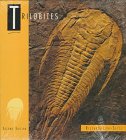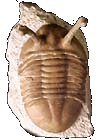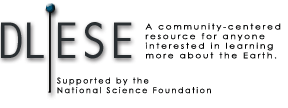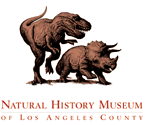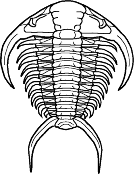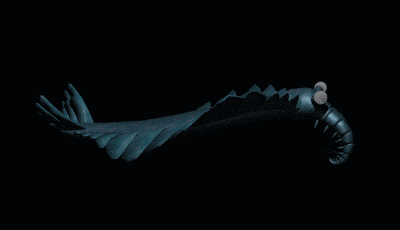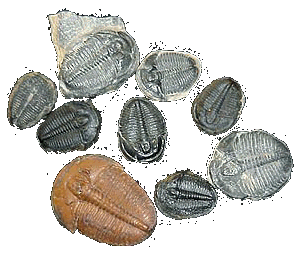-Menu
--
-Site Map
-Introduction
-Glossary of terms
-Geological Time
Morphology:
-Dorsal Morphology
-Ventral Morphology
-Internal Anatomy
-Trilobite Eyes
-Major Features
-Special Terms
-Facial Sutures
-Pygidium Size
-Hypostome Types
-Glossary
Paleobiology:
-Ecology
-Trace Fossils
-Feeding Habits
-Paleogeography
-Trilobite Localities
-Reproduction
-Ontogeny
-Molting
-Enrollment
-Extinction
Classification:
-Arthropods
.Trilobite Origins
-Trilobite Orders
-Key to the Orders
-Evolutionary trends
-Pictorial Guides
-Trilobite Families
-Trilobite Genera
-ICZN Business
Miscellaneous Topics:
-Trilobite FAQ
-Trilobite Quiz
-Trilobite Links
-Trilobite Photos
.Trilobite.Preparation
-Glossary of terms
-Selected References
-Trilobite books
-Trilobite folio
-Site Accolades
A site devoted to understanding trilobites
created and maintained by Sam Gon III
 walking
trilobite
©2000 |
This page last revised 01 SEPTEMBER 2005 SMGIII
..TRILOBITE OF THE MONTH -- SEPTEMBER 2005
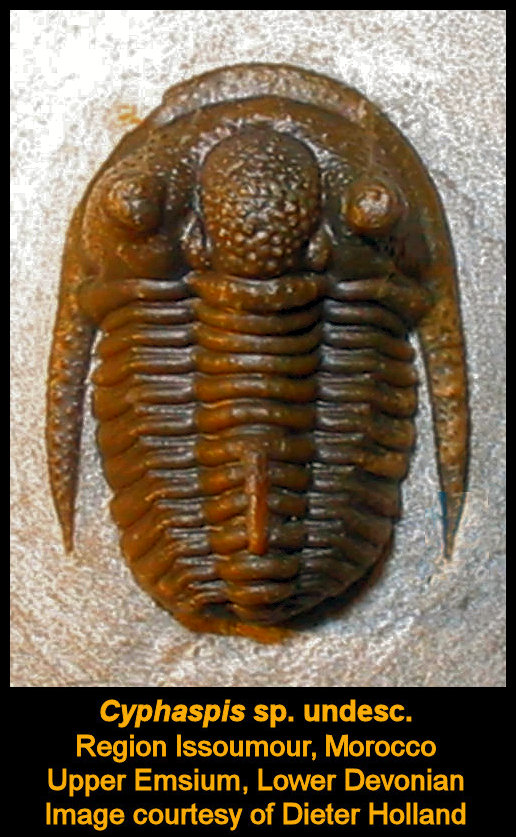
The Trilobite of the Month for
September 2005 is a wonderfully inflated specimen of an undescribed
species of Moroccan Cyphaspis, a
member of the family Aulacopleuridae,
in the order
Proetida, Superfamily Aulacopleuroidea. I
really enjoy the tubercles that ornament both the glabella as well as the genal
spines. The elbow-like feature of each thoracic segment, called the
fulcrum, is also quite evident, forming a roof-like peak that runs in a
curve on both sides of the axis, from cephalon to pygidium.
Images like
this help explain why trilobites are one of the best-known and appreciated
groups of prehistoric animals. Each month, a new example of trilobite
diversity will be showcased here. With over 15,000 described species, we
may never exhaust the possibilities! If you
have a stunning image of a trilobite that you could share as a future
"Trilobite of the Month," please let me
know!
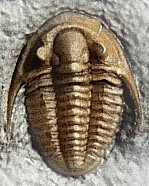 |
Trilobites are the most diverse group of extinct animals preserved in the fossil record. Nine orders of trilobites are recognized, into which 15,000+ species are placed. Learn more about trilobite morphology, ecology, behavior, reproduction, and development, and how they relate to trilobite evolution and classification. View galleries of trilobite images from the web, examine fact sheets, pictorial guides, and an identification key for each order, refer to a family listing, a genus listing, or consult a trilobite glossary and bibliography, explore links to other web resources on trilobites, and review books on trilobites, including an exclusive hardcopy folio adaptation of this website. |
Sheets









This site has enjoyed feedback from a growing number of trilobite workers from all over the world who have
generously offered their suggestions and corrections. I gratefully acknowledge their help and encouragement.
This website Copyright ©1999 - 2005 by S. M. Gon III
The Trilobite FAQ
Use the links on the right to answer the Qs on the left
| Unfamiliar with trilobites altogether? | Introduction to Trilobites | ||
| What are trilobite body parts called? | Trilobite Dorsal Morphology | ||
| Unfamiliar with trilobite undersides? | Trilobite Ventral Morphology | ||
| What about the inside of a trilobite? | Trilobite Internal Anatomy | ||
| What was special about trilobite eyes? | Trilobite Eyes & Vision | ||
| Want definitions of trilobite terms? | Glossary of Trilobite Terms | ||
| How are the eight trilobite orders related? | Trilobite Systematic Relationships | ||
| Want a list of all trilobite families? | Phylogenetic List of Trilobite Families | ||
| Want a list of all trilobite genera? | List of 5000 Trilobite Generic Names | ||
| How long ago did trilobites exist? | Geological Time relevant to Trilobites | ||
| What ecological roles did trilobites play? | Trilobite Ecology and Environments | ||
| How do we know about trilobite behavior? | Trilobite Trace Fossils | ||
| What and how did trilobites eat? | Trilobite Feeding Habits | ||
| How did trilobites reproduce and grow? | Trilobite Reproduction & Development | ||
| What roles did sutures play in molting? | Trilobite Sutures & Molting | ||
| How did trilobites defend themselves? | Trilobite Enrollment & Coaptation | ||
| How did trilobites evolve? | Trilobite Evolutionary Trends | ||
| What is the origin of trilobites? | Trilobites Origins | ||
| What
were the last trilobites? |
Trilobite Extinction | ||
| Where in the world are trilobites
found? |
World
Trilobite Localities | ||
| Think you know about trilobites now? | Take the Trilobite Identification Quiz! | ||
| How big did trilobites get? | World's Largest Trilobites | ||
| How do you prepare a trilobite fossil? | Trilobite Preparation | ||
| Is this site available in hardcopy form? | Yes! Preview the folio pages here | ||
| Are there many books on trilobites? | Review recommended trilobite books! | ||
| Found mistakes or refinements needed? | Please tell me about them |
NEW! SEARCH THIS WEBSITE! THIS SITE OPTIMIZED FOR VIEWING AT 1024 X 768 RESOLUTION
In these pages, you may recognize species that are common, well-known, or sitting in a familiar museum collection!
This guide might help you arrange trilobite diversity systematically, aid in identification of specimens, and enhance your understanding of these fascinating elements of Paleozoic biodiversity. Happy browsing! -- Sam Gon III
